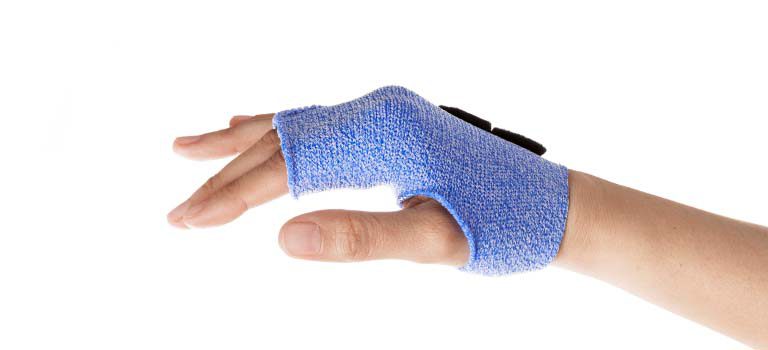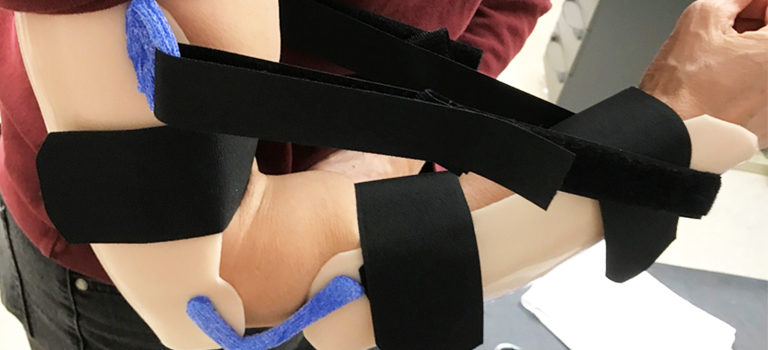
Munster Orthosis from Orficast More 30cm and 6cm
An impressive orthosis for preventing full active forearm rotation
The Muenster is a useful orthosis for preventing full forearm pronation and supination. It helps to position the forearm in a neutral position so that injured structures can heal.
We go into further detail about this design and explain how to fabricate the orthosis from Orficast More. The new 30 cm version now allows you to fabricate even larger, arm-based orthoses in the unique knitted thermoplastic.
Go straight to the fabrication tutorial.
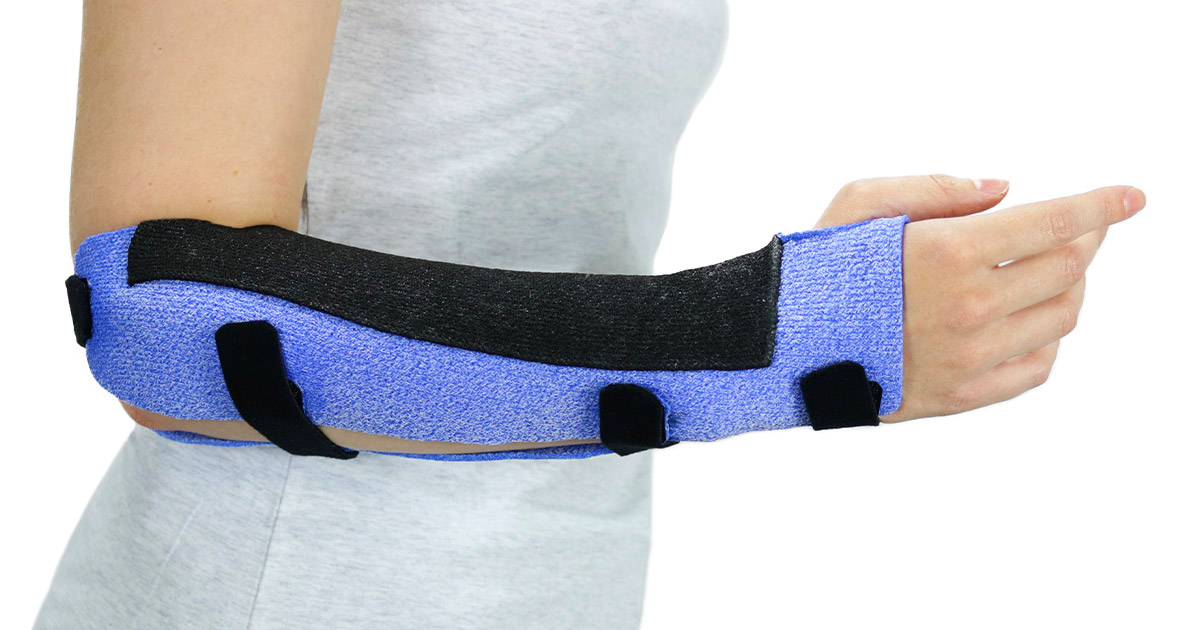
Pathology
The Muenster orthosis helps to prevent full active forearm rotation. This way, injured tissues and structures can heal without overstretching or shortening of tissue length. This may be particularly important for certain elbow pathologies or after trauma/surgery of the Radius, Ulna, Distal Radial-Ulnar joint (DRUJ), Proximal radial-ulnar joint, and TFCC structures.
The Muenster is typically used to immobilize the forearm in the following pathologies:
- TFCC tears
- Galeazzi fracture dislocations
- DRUJ fractures and dislocations
- Ulnar abutment injuries
It allows for limited active flexion and extension of the elbow, but prevents full forearm rotation, and provides stabilization of the radial-ulnar joint and immobilization of the DRUJ.
Read our dedicated blog post about the Muenster and Sugar Tong Orthosis for more information.
Product recommendations
An elastic-based, coated material is highly recommended for the Muenster Orthosis. The following materials all work very well for this design:
- Orfit NS in 3.2 mm (1/8”)
- Aquafit NS (Orfit Natural NS) in 3.2 mm (1/8”)
- Orfit Colors NS in 3.2 mm (1/8”)
- Orficast More 30 cm
Thanks to the non-stick coating of the above thermoplastics, you can pinch the material together at the posterior elbow and on the ulnar border. Both hands are free to position the wrist in slight extension and the forearm in a neutral position.
Specific advantages of Orficast More 30 cm are the easy pattern making and application of an otherwise more challenging fabrication. The fabric-like material provides comfort and makes for a relatively light-weight orthosis.
.
Fabrication steps
1. Preparation of the material
- Cut a rectangle of Orficast More 30 cm about 30-35 cm long.
- Cut a strip of Orficast More 6 cm the same length.
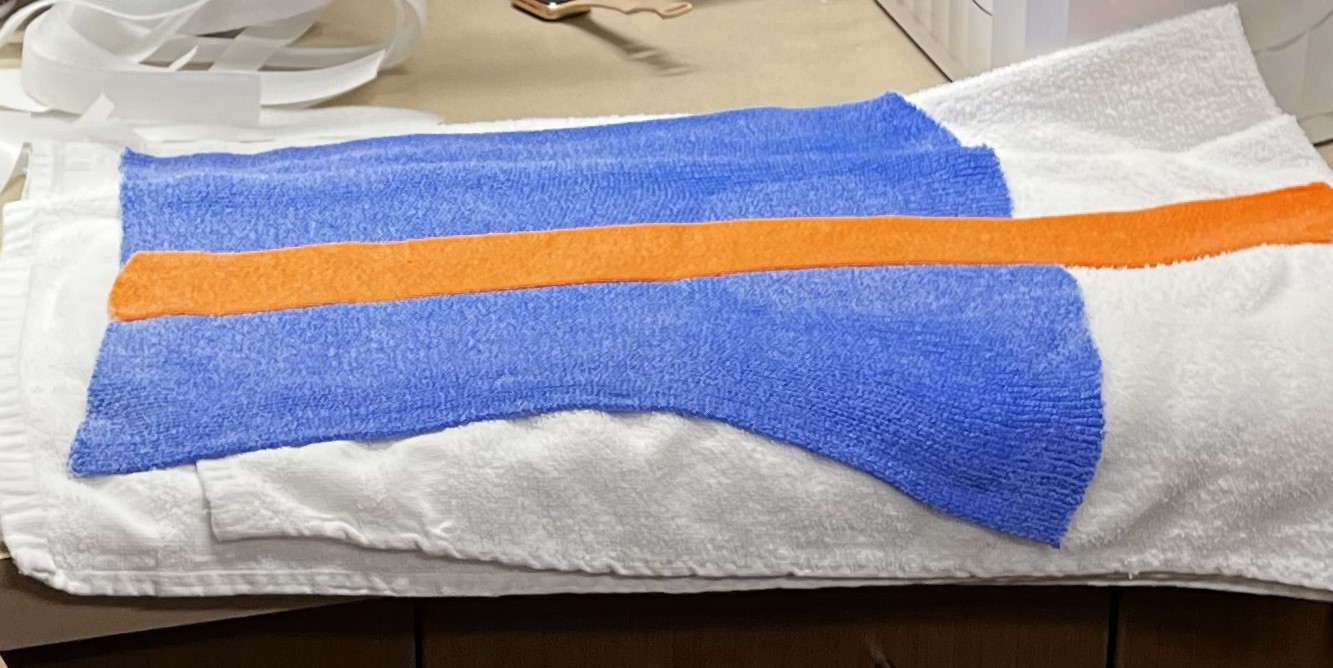
- Heat both pieces of Orficast More in the water bath at 65 degrees C (149 F) for about 2.5 minutes.
- Remove both pieces and place on a towel. Position the Orficast More 6 cm directly in the middle of the Orficast More 30 cm. Roll the towel to compress the layers together and to remove excess water. If necessary, reheat before final application.
- Cut a small hole for the thumb about 4-5 cm from the distal edge of the material.
- On the other side cut out an oval to allow for elbow motion.
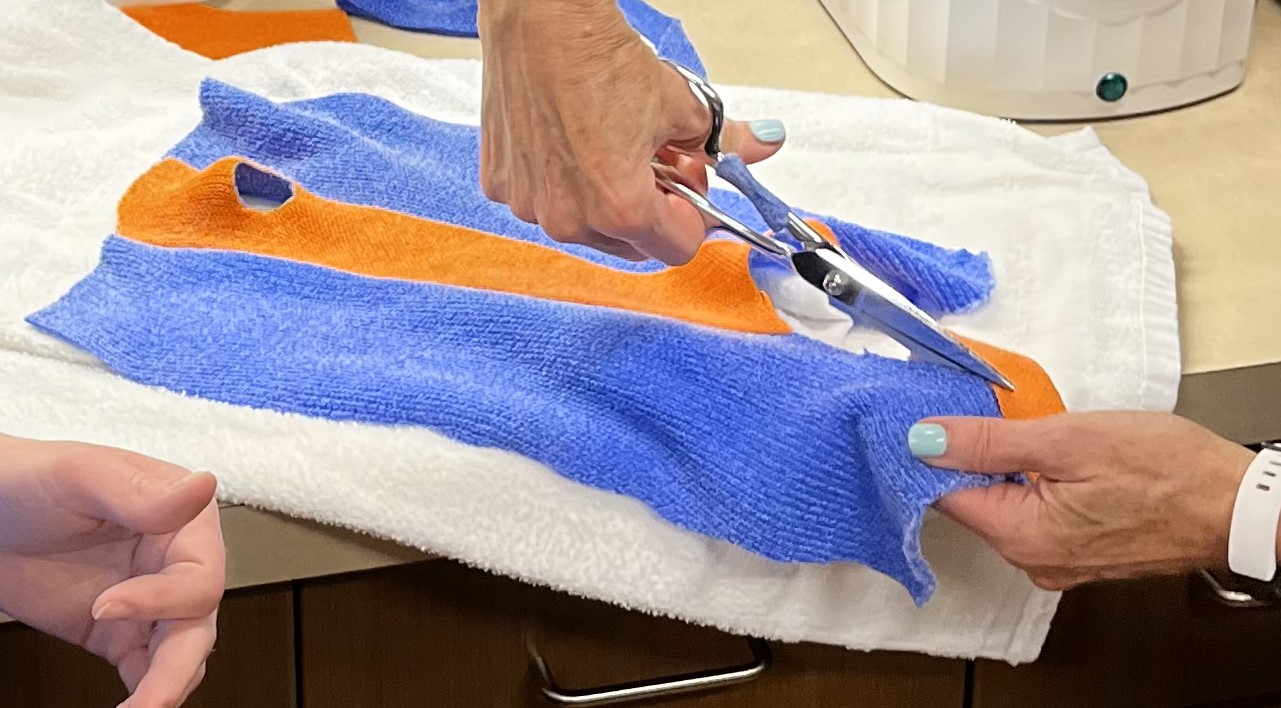
.
2. Molding the Orthosis
- Have the patient stand with the elbow flexed to 90 degrees and the forearm placed in neutral. You will need full access to the posterior elbow, lateral and medial epicondyles, and wrist for best fabrication technique.
- Place the material over the thumb and pinch the sides together at the fifth metacarpal and around the hand, wrist, and forearm. Stretch the material and pinch together behind the flexed elbow.
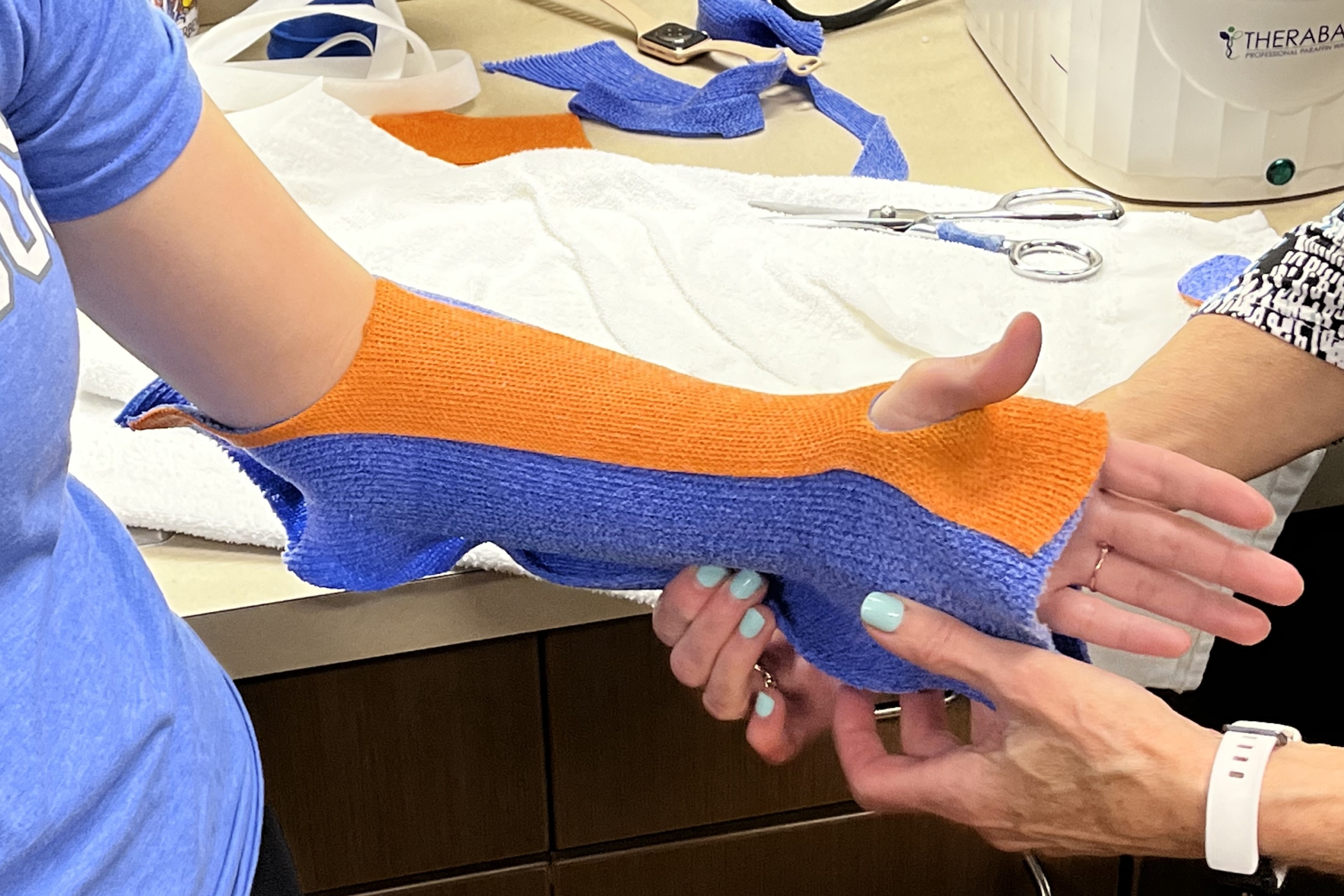
- Lightly pinch along the entire forearm to capture the shape, but do not pinch too much of the material as you will need to open this up before it permanently sticks together.
- To reinforce the lateral and medial epicondyles with extra scraps of Orficast More, place the heated material over the epicondyles while still very wet and press so that they stick.
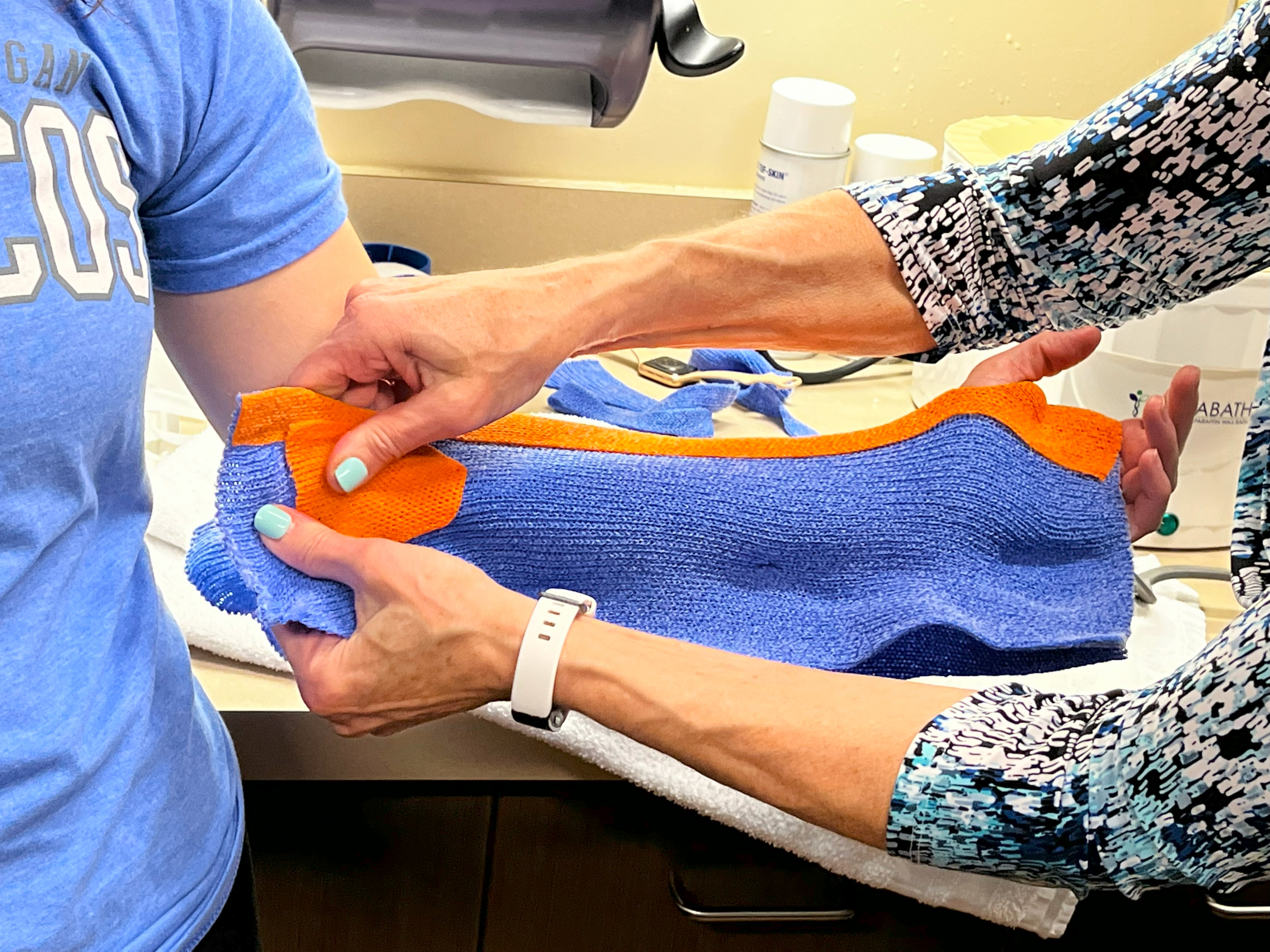
3. Finish the orthosis
- Remove the orthosis by carefully opening the pinched seam and trim the excess material away. Allow for finger motion at the distal palmar crease and comfortable but not full elbow flexion.
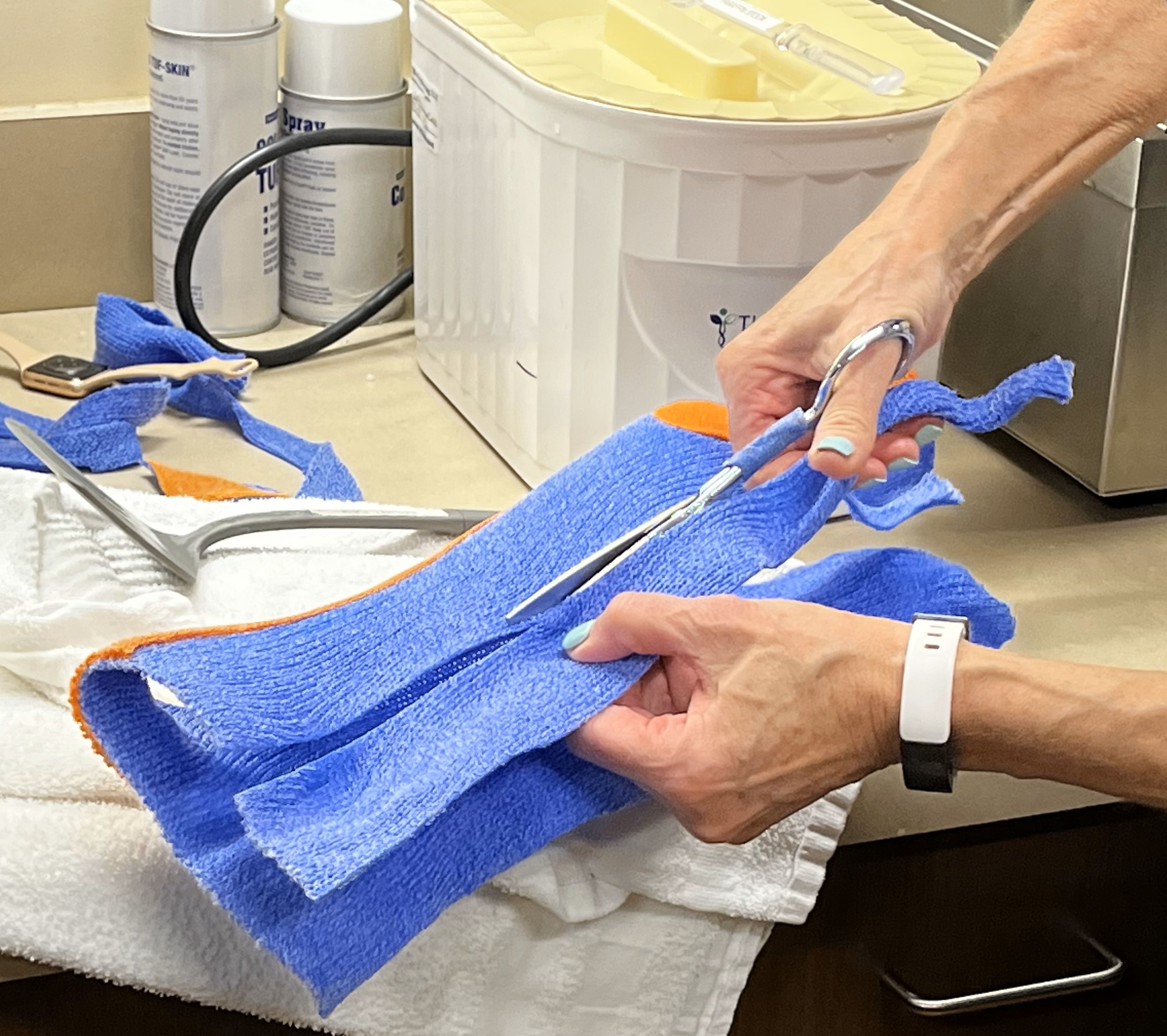
- Attach all necessary hook and loop straps. See our tutorial for the application of strapping to Orficast More.

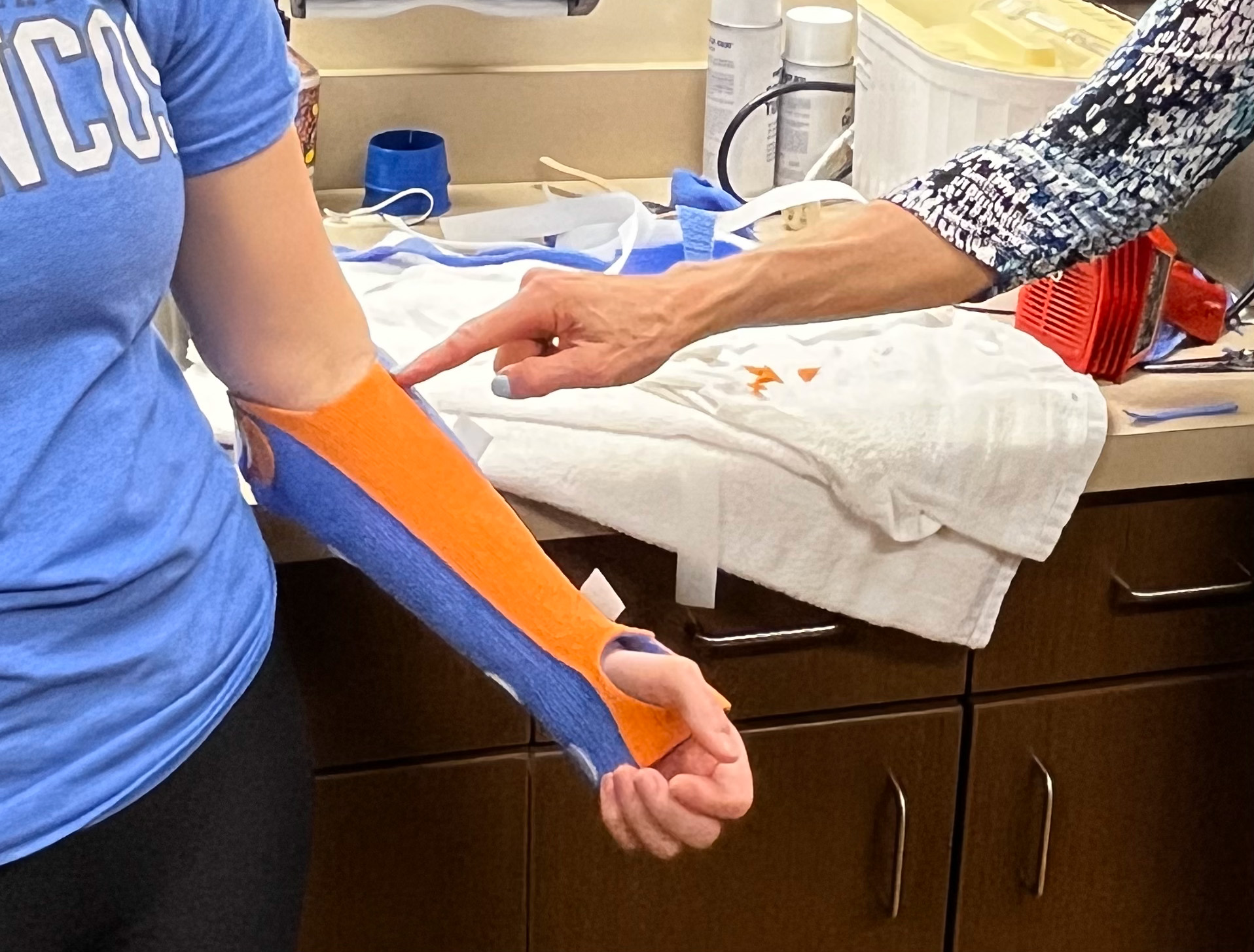
4. Wearing schedule
This orthosis should be worn full time immediately after surgery of the involved structures. The patient could be instructed in gentle elbow range of motion exercises.
![]()

Written by Björn Le Roy, Occupational Therapist, BA
Björn was trained in orthotic fabrication by French Occupational Therapist, Jean Christophe Arias. In 2016, he began his Bachelor’s in Occupational Therapy which he successfully concluded in 2019.
Over the years, he has become an avid teacher of orthotic fabrication, giving numerous educational workshops across the world.

Co-writer: Debby Schwartz, OTD, OTR/L, CHT
Physical Rehabilitation Product and Educational Specialist at Orfit Industries America.
Debby is a certified hand therapist with over 36 years of clinical experience. She completed her Doctorate of Occupational Therapy at Rocky Mountain University of Health Professions in 2010. She has worked at Orfit Industries America as Product and Educational Specialist since 2007.
Debby is also an adjunct professor at the Occupational Therapy Department of Touro University, School of Health Sciences, and at the Occupational Therapy Department at Yeshiva University, Katz School of Science and Health in NYC. She has written many book chapters in the field of hand therapy and multiple articles for hand therapy journals, including the ASHT Times and the Journal of Hand Therapy. She has published a new textbook on orthotic fabrication together with Dr. Katherine Schofield, entitled “Orthotic Design and Fabrication for the Upper Extremity: A Practical Guide”.
![]()
If you’d like to receive the latest product updates and interesting Orfit news, subscribe to our newsletter:


